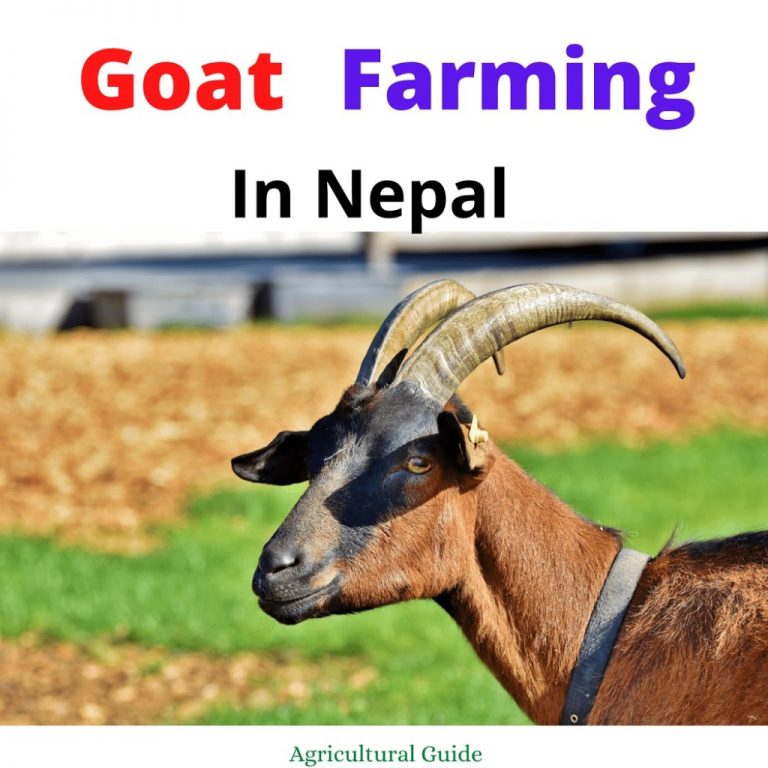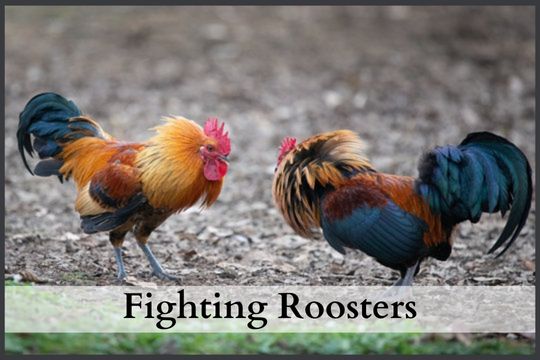Pashmina made from Pashmina Goat is one of the most expensive and finest craftsman work. You all must have heard about it. If not, we are here for the rescue. Pashmina is famous from ancient times and received Royal patronage. In spite of the heavy price tag it comes along with, it is very famous and people have a craze for this material. So what makes Pashmina special? Let us dig in and learn more about this beauty. In this article, We will be learning all about Pashmina Goat, Its Products (Pashmina), Price and Many other things.
Origin Of Pashmina Goat
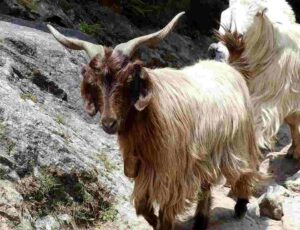
Not many of you know that Pashmina comes from a Persian word that means soft and shiny. The specialty of Pashmina wool is that it is spun from a very special goat called the Pashmina goat or Ibex goat, which is native to Kashmir and Ladakh regions of India. Pashmina is considered to have originated from Kashmir. Many people in this region are dependent on Pashmina Goat Farming. When Pashmina shawls reached the Western World, it was referred to as Cashmere. The Pashmina Goat is also called Changthangi or Chagra by the locals in Ladakh, India. In Nepal, It is known another name called, Chyangra. They are reared to produce the finest shawls of the world.
Must Read: Planets In Order
Pashmina Goat
The pashmina goat is a rare breed of goat originated in the Himalayan region and the borders region of Pakistan and China (Tibet). The animal’s thick and fuzzy coat makes it extremely popular for making shawls, scarfs, and other fashion accessories. Pashmina goats cannot live in cold conditions; they are only known to inhabit the temperate zone, which is between about 10° to 20 °C (50 ° to 70 °F).
A short snapshot of the ‘every morning’ ritual of Changpa life..lead your hundreds upon hundreds of pashmina goats back out to graze the sparse and open Changtang landscape, high on the Tibetan plateau. Each evening, the reverse…round them all up to pen in relatively safety in rock walled corrals. A little glimpse into life in this shockingly beautiful yet unforgiving environment.
Video Source: Julie-Anne Davies
Pashmina goats are reared with much care and affection due to its economic importance. The goats are of medium stature and are usually 60 to 80 cm tall. The weight can fluctuate between 30 to 45 kgs. These light brown colored mammals are highly valued for their fur, as it produces the famous Pashmina. Some characteristics of the goat are given below:-
Body Size
Small- to medium-sized with long coats. The face is convex with short and straight ears. A thick undercoat keeps goats warm in cold weather.
Coloring
White is the most prevalent and highly demanded Pashmina product as well. Other common shades of Pashmina Goat include gray to black and cream to red-brown, with occasional white markings.
Weight
Females Goats are almost 29 kg by the time they are about four years old, while males gain this weight when they are about three years old. Growth is gradual and slow during the winter due to extreme cold conditions and poor grazing
Types Of Pashmina Goat
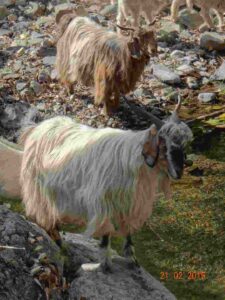
The body of the Pashmina goat is usually with a straight posture, but they might be heavy. The Pashmina goat is of four types:
•Western Pashmina Goat
This is also known as the western or Kirgiz type. They usually yield a higher percentage of undercoats as compared to others.
•Eastern Pashmina Goat
They are also referred to as the Mongolian Pashmina goat. The main characteristic is the long outer coat fiber that protects the inner undercoat.
•Feral and Northern Type
They can be referred to as laymen of the Pashmina goats. They do not yield much undercoat and are less valuable when compared to others.
•Pashmina-Mohair Crossbred
Crossbreeding is a healthy practice. Due to crossbreeding of the Pashmina Goat and the Mohair goats, the undercoat obtained has the qualities of both. The fleece obtained from this cross-breeding is thicker and of super good quality.
Life Of Pashmina Goats
ChangPas are the people who handle the Changthangi or Pashmina goat. The goat usually lives a nomadic lifestyle. They are moved for grazing in the day and return by the evening before the sunsets. They are under harsh climatic conditions and due to this very reason they develop a thick undercoat, which is later reared for Pashmina. The breeding months are November and December and take place actively. The gestation period of the Pashmina goat is about 150 days. The animals start becoming sexually active from the month of June. One interesting fact to note is that kid mortality in the Changthangi goat is very poor. Mating is also carried out easily. The young Pashmina goat is usually weaned at about 4 months of age. Two types of grazing- namely highland grazing and pasture grazing are practiced with highland grazing being practiced during July and September and pasture grazing during May-June and October-December.
Use
Pashmina Goat are mainly used/reares for their hairs. Their undercoat yields ultra-fine cashmere ranging 12-13 microns thick and 2 inches (4 cm) long. It is one of the finest fibers that can be obtained from wool goat breeds, about three times more insulating as compared to sheep wool. These goats are also used for meat and as pack animals to carry weights in difficult terrain.
Is Pashmina Goat Cross Breed?
It is one of the most controversial topics- is Pashmina goat cross breed? However, the simple answer to this lies in the price tag itself. The heavy price tag of Pashmina comes because of the breed from which the wool is reared. Changthangi or Chagra is the goat reared to obtain Pashmina wool and they are commonly known as the Pashmina goat.
However, there are instances when the Pashmina goat is cross-bred with local goats, in such cases, the price of the Pashmina product falls.
The pure breed is expensive and the product is more expensive respectively.
Pashmina Goat Price
Even though the Pashmina Goat yields valuable wool, it is also reared for its meat. The price range lies between 200 and 400 and is different for male and female goats.
Male goats of Changthangi cost 325-350 Rs/kg (live weight) in India. Female goats cost about 275-300 Rs/kg (live weight) in India.
The goat price can be different and depends on factors like age, season, and breed.
Pashmina Goat Products
Pashmina goat has a thick undercoat of hair and it is reared for Pashmina products, the thickness of this undercoat ranges between 12 to 15 microns. The world-famous Pashmina wool is used to produce the Pashmina shawls- extremely lightweight and comfortable, which makes them valuable. The word Pashm means wool in the Persian language, and the material is famous worldwide. The first step in the production of Pashmina products includes the collection of the winter coat of the Changthangi breed. Each goat gives about 80 to 170 grams of fiber. The spring season is also called the molting season as the pashmina goat naturally shed their coat in this season. One interesting feature of this undercoat collection is that the coat of the goat is collected by combing and not by shearing, which further enhances the quality of the wool.
After collecting the undercoat, the raw undercoat is exported to Kashmir where skilled craftsmen and artisans convert the raw undercoat into beautiful Pashmina shawls. The major center of production is Srinagar in Kashmir.
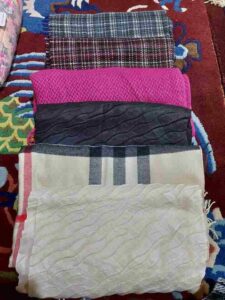
It is an interesting fact that it takes almost 180 hours to produce a single traditional Pashmina stole.
Pashmina is very expensive. You can buy one for $3,000 or more. Not many people can afford it yet it is easy to get and hard to stop wearing once you get one. Sometimes they disguise themselves as a scarf and other times they come in very expensive pieces of jewelry. Their wool is soft and warm. Also, if you want, you can check the warmest hunting boots. It’s super long and can be styled in various ways. They have grown to love the feel of the wool on their skin.
The goats are made up of four different colors: white, gray/brown, black/brown, and green/black. The colors are separated and each one has a different value Pashmina. The first and best color is white, next is green/black, then gray/brown, and lastly black/brown. They all come from the same place, but only the first two colors are very expensive. Although they’re super soft to touch, they feel like an extremely thick fur coat. Some people own them to look stylish or for fashion; however, most own them for their super soft fur that can be used as clothing and other accessories.
Products From Pashmina
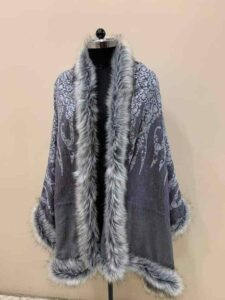
Pashmina is famous for its lightweight material and softness. Pashmina is mainly used to produce
✓Scarfs
✓stoles
✓Shawls
✓Blankets
The craze for Pashmina shawls increased when a shawl known as ShahMeena gained much popularity in the 1990s. Slowly the material made its way into the fashion industry as well and started being exported globally.
In some cases to make the shawls cheaper, the raw material is blended with cheap wool as well. Sometimes, the blend is between Pashmina and Silk and the content is varied, hence the price differs.
Pashmina blankets are very popular and simultaneously, expensive. Blankets are usually related to a bulky appearance, but the interesting fact about Pashmina blankets is that they are extremely lightweight with a thin texture, without any compromise in the warmth they provide. Due to this very reason, they are popular in the hilly regions of Kashmir. They provide sufficient warmth in winter, discarding the bulky blankets.
Conclusion
Pashmina goats have been a vital part of reviving Kashmir’s economy and have been thriving since. Pashmina Wool is extremely valuable and a source of expensive and fine products. Weaving Pashmina wool is a great artistic skill and should be preserved for future years.
You May Like These Articles:-
Casting Of Animals: Cattle & Buffalo Casting

